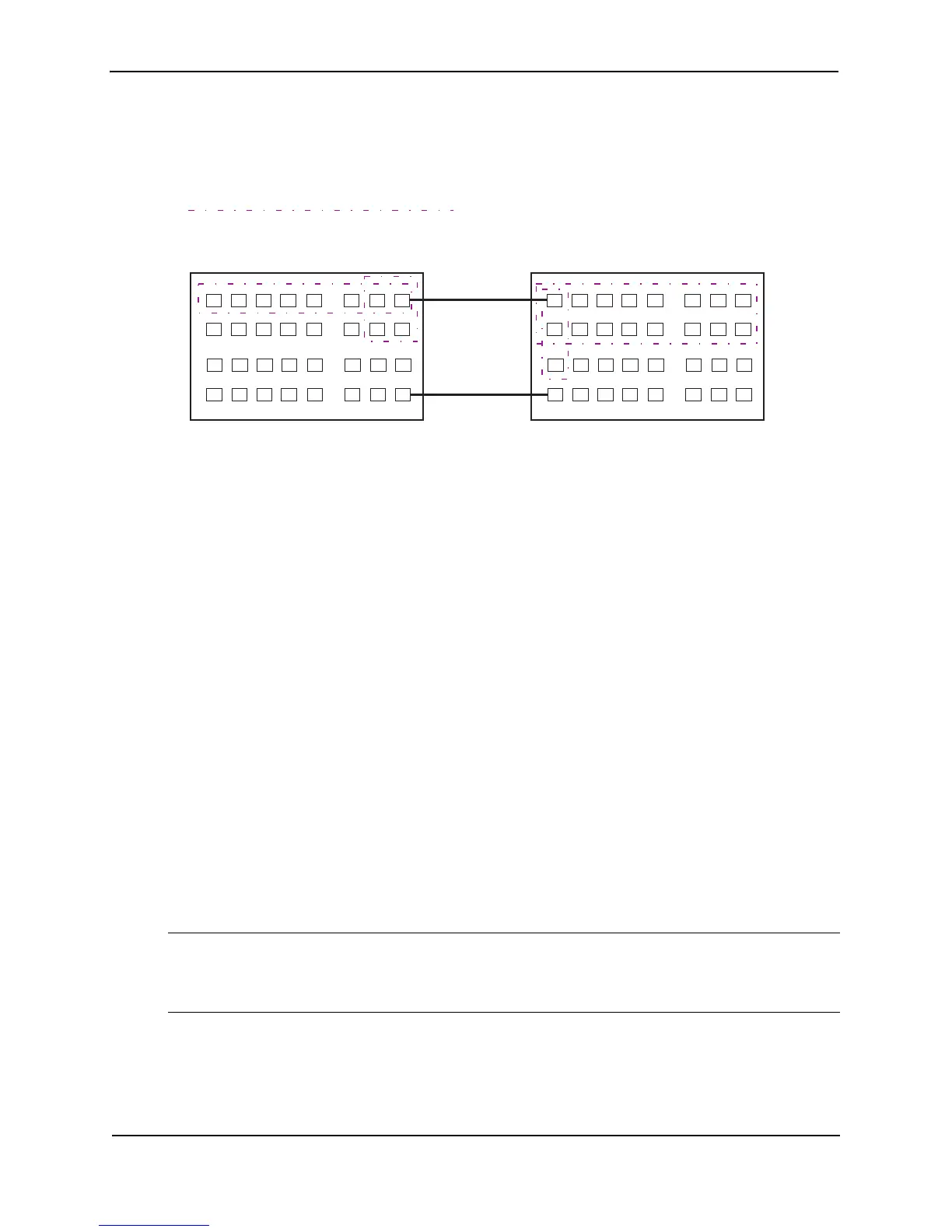Foundry Configuration Guide for the FESX, FSX, and FWSX
11 - 8 © Foundry Networks, Inc. December 2005
Figure 11.5 shows an example of two devices that have the same Layer 2 port-based VLANs configured across
them. Notice that only one of the VLANs requires tagging.
Figure 11.5 VLANs configured across multiple devices
802.1Q-in-Q Tagging
Foundry devices provide finer granularity for configuring 802.1Q tagging, enabling you to configure 802.1Q tag-
types on a group of ports, thereby enabling the creation of two identical 802.1Q tags (802.1Q-in-Q tagging) on a
single device. This enhancement improves SAV interoperability between Foundry devices and other vendors’
devices that support the 802.1Q tag-types, but are not very flexible with the tag-types they accept.
For example applications and configuration details, see “Configuring 802.1Q-in-Q Tagging” on page 11-49.
Spanning Tree Protocol (STP)
The default state of STP depends on the device type:
• STP is disabled by default on Foundry Layer 3 Switches.
• STP is enabled by default on Foundry Layer 2 Switches.
Also by default, each port-based VLAN has a separate instance of STP. Thus, when STP is globally enabled,
each port-based VLAN on the device runs a separate spanning tree.
You can enable or disable STP on the following levels:
• Globally – Affects all ports on the device.
NOTE: If you configure a port-based VLAN on the device, the VLAN has the same STP state as the default
STP state on the device. Thus, on Layer 2 Switches, new VLANs have STP enabled by default. On Layer 3
Switches, new VLANs have STP disabled by default. You can enable or disable STP in each VLAN
separately. In addition, you can enable or disable STP on individual ports.
• Port-based VLAN – Affects all ports within the specified port-based VLAN.
STP is a Layer 2 protocol. Thus, you cannot enable or disable STP for individual protocol VLANs or for IP sub-net,
IPX network, or AppleTalk cable VLANs. The STP state of a port-based VLAN containing these other types of
VLANs determines the STP state for all the Layer 2 broadcasts within the port-based VLAN. This is true even
though Layer 3 protocol broadcasts are sent on Layer 2 within the VLAN.
User-configured port-based VLAN
Segment 2
Tagging is not required for the ports
on Segment 2 because each port is
in only one port-based VLAN.
Segment 2
T
T
T
T
T
T
T
T = 802.1Q tagged port
Segment 1
Segment 1
Tagging is required for the ports
on Segment 1 because the ports
are in multiple port-based VLANs.
Without tagging, a device receiving
VLAN traffic from the other device
would not be sure which VLAN the
traffic is for.
